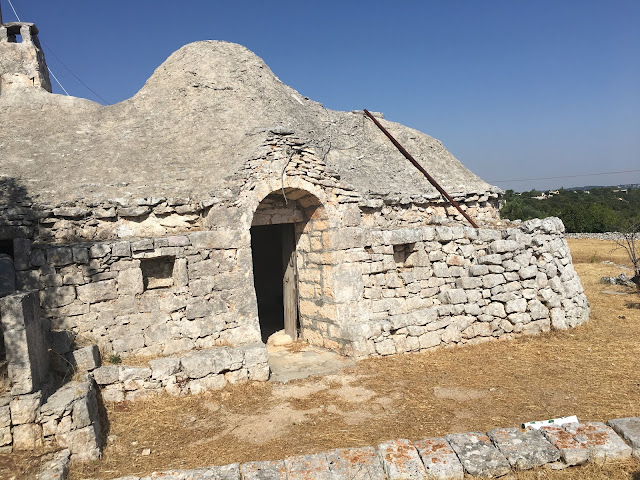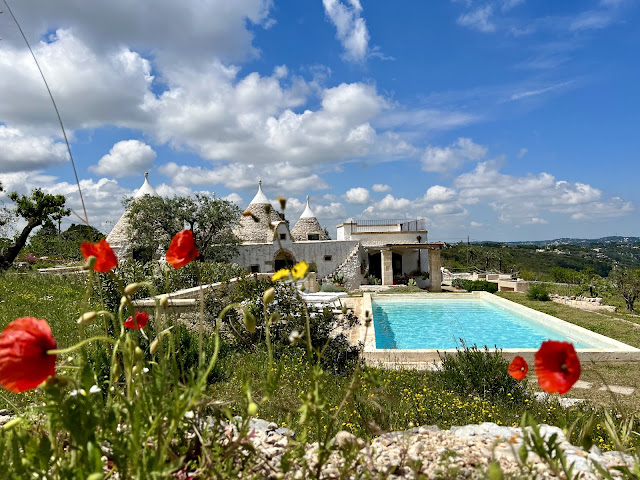On John Ruskin, architecture - and Facebook
 |
Our trullo pre-acquisition |
One of the things I love most about the digital world is the ability to stay in touch even when you live 17,000 km away. As the child of expats - then immigrants - I remember the anxiety of telephone calls to grandparents as the minute 'pips' meant a big phone bill and so much had to be said with so little time.
Nothing beats being face-to-face with those you love and miss but Facebook and all the other accoutrements of the 21st century mean you can still discuss the news with your ex colleagues over a morning coffee, share vicariously their holidays and work triumphs, see kids grow up and who was at which dinner party (and what they ate and drank!) There are a gazillion ways to stay in touch and keep friendship alive long distance. Jeez I'm glad about that.
Occasionally too, social media exposes you to a book, a show, a film you might not usually consider and so it was when Facebook friend, Caterina Fuchi, a Venice based architect and academic I've never met in real life challenged me to read the 19th century art and architecture critic, John Ruskin's Seven Lamps of Architecture. (The fact he worked in our 'hood and the local park is named after him added to the attraction). Caterina told me our trullo project reminded me of this essay - and I can't describe, after reading it, how happy that makes me.
 |
Running in Ruskin Park Camberwell |
So, in a nutshell: written in 1849, it's a book-length essay which is ostensibly a call to English architects to turn their back on the humanist influences of Renaissance architecture for a return to the principles of the Gothic. i.e. he and others wanted to see a Gothic revival. (pointed arches, vast vaults, buttresses and the desire to span great spaces and heights).
You're right, nothing to do with our trullo. But his 'seven lamps' - the principles or moral attributes he believed were fundamental to good design - really do relate and at the risk of repeating myself, this has given me so much pleasure.
 |
John Ruskin |
1. Beauty. Nature as the model for architectural beauty. Lines and shapes inspired and derived from the natural world. (Those cones and drystone walls look forged by nature.)
2. Truth. Design should not be tricked up, straight forward, buildings should be honest and not pretend to be something they are not. Wood is wood, not made to look like stone. Windows are windows, doors doors. (Trulli could not be simpler, born to provide quickly mountable and demountable shelter for man and animal).
3. Power. Ok, this was most complex exhorting architects to consider the setting and context of their works, ensuring that their buildings are viewed well from all angles and all sightlines. (No choice on this one but the vine worker who put it up in the late 1700s chose to sit it on a gentle hill and look out to his terraces and crops and further, to sea).
4. Life. Here, the critic argued that buildings are the product of human hands and that artisans and stonemasons and builders pour their life and passion into the construction if given the freedom to express their skills. (Watching the fellas at work reworking stones as men did centuries before them is an inspiration in itself).
 |
Making trullo walls safe and waterproof |
5. Obedience. Here, Ruskin pooh-poohed the notion of deign originality for its own sake... referring of course to his much loved Gothic style and English architectural values. I get his point but less applicable here.
6. Sacrifice. The dedication of buildings to the creator, God. (ahem, not in my songbook, but the implicit desire to focus on the functionality of the building over ornament resonates deeply).
7. Memory. My favourite. This one extols the belief that buildings should respect the culture from which they draw from and reflect. Si. Yes. YES.
Ruskin 101 finished. Meanwhile, work on the pile of rocks continues apace and next time, no veering into 19th century critics - just lots of photos to show you how far we've come (and how far we still have to go!)


Comments
Post a Comment